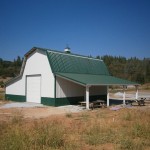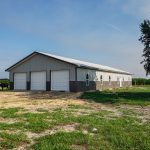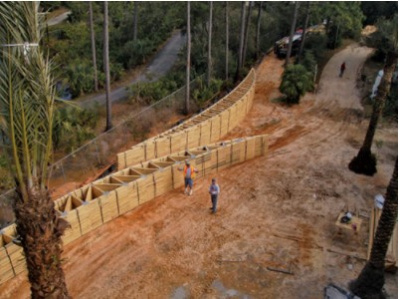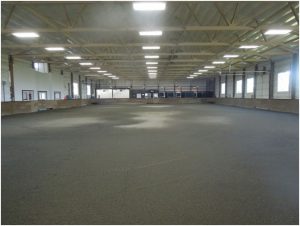This week Mike the Pole Barn Guru discusses reader questions about the practicality of adding a pool to an existing pole barn, if the trusses in a gambrel might hold the load of a deer while processing, and what square footage might give the best “bang for the bunk?”
 DEAR POLE BARN GURU: I am considering buying a house with an uninsulated pole barn. Would it make sense to add a pool and insulation to an existing structure. The floor is mostly asphalt and has sliding doors larger than a double garage door. The structure is approximately 40ft by 80ft and 20 ft high. Does this project make sense and how much might it cost to insulate the pole barn?
DEAR POLE BARN GURU: I am considering buying a house with an uninsulated pole barn. Would it make sense to add a pool and insulation to an existing structure. The floor is mostly asphalt and has sliding doors larger than a double garage door. The structure is approximately 40ft by 80ft and 20 ft high. Does this project make sense and how much might it cost to insulate the pole barn?
Thank you, CHRIS
DEAR CHRIS: I can’t see this as being a practical design solution. You would need to replace sliding doors with either an insulated overhead door or do away with large door entirely. Trying to climate control a space this large (as well as insulating to get there) will prove costly. Here are some other considerations https://www.hansenpolebuildings.com/2019/08/post-frame-indoor-swimming-pool-considerations/. Me- if I was going to have an indoor swimming pool, I would design a new building to best fit pool and its requirements.
 DEAR POLE BARN GURU: Good morning, quick question for you, I am going to be building a 28x32x10 pole barn and looking to have a gambrel for hanging a deer from for processing. Probably not smart to attach it to the trusses, what would you recommend?
DEAR POLE BARN GURU: Good morning, quick question for you, I am going to be building a 28x32x10 pole barn and looking to have a gambrel for hanging a deer from for processing. Probably not smart to attach it to the trusses, what would you recommend?
I will add I don’t need anything too heavy duty seeing it is for my own personal use and not commercial grade. CRAIG in CHAGRIN FALLS
DEAR CRAIG: An adult buck will top out at roughly 160 pounds. Chances are ordering trusses rated for a 10 psf (pounds per square foot) bottom chord dead load will more than cover weight of any ceiling or attic bonus room floor as well as your deer. Happy hunting!
DEAR POLE BARN GURU: Hello sir, quick question. Is there a certain “depth” that has the best bang for bunk as far as square feet? For example, 40×100 vs 50×80 to achieve the same 4000 sq ft. or “cost shoots up dramatically after xx depth.” Thanks! MIKE in NEW PORT RICHEY
 DEAR MIKE: As you get closer to perfectly square, your building becomes more efficient in materials use, as well as stronger against wind forces. Consider your two example choices – 40 x 100 has 280 lineal feet of walls 50 x 80 has 260. Besides siding, less exterior wall also means less insulation and less area for thermal heat loss/gain. For post frame your most cost efficient multiples are typically 12′ (e.g. 36′ x 108′ or 120′; 48′ x 84′). Ultimately we are talking about cents per square foot, not dollars – so make your building shell fit with how your rooms best layout inside, rather than trying to fit rooms into a preordained box.
DEAR MIKE: As you get closer to perfectly square, your building becomes more efficient in materials use, as well as stronger against wind forces. Consider your two example choices – 40 x 100 has 280 lineal feet of walls 50 x 80 has 260. Besides siding, less exterior wall also means less insulation and less area for thermal heat loss/gain. For post frame your most cost efficient multiples are typically 12′ (e.g. 36′ x 108′ or 120′; 48′ x 84′). Ultimately we are talking about cents per square foot, not dollars – so make your building shell fit with how your rooms best layout inside, rather than trying to fit rooms into a preordained box.








